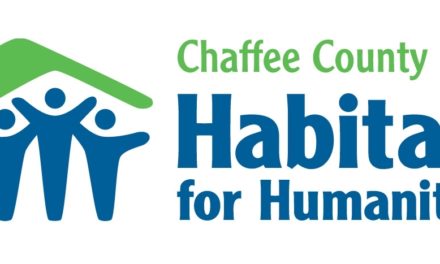Salida has been undergoing a lot of change in recent years, and change can feel mighty uncomfortable to some people. A recent example of the unease that change can bring about is the contentious special election over Salida Crossings.
Despite the divisiveness, I believe that both opponents and proponents of the development unintentionally found common ground that might make working together possible in future affordable housing projects. In this Salida city column, I will highlight the reasons I supported the Crossings, as well as discuss what I see as the opportunity for residents to be more collaborative on future initiatives.
When one thinks of something like Salida Crossings, it is really important not to view it in isolation. It needs to be looked at as one piece of the puzzle in solving our housing issue. A common criticism of those objecting to it was that it did not address the housing needs of our service workers and that affordable rentals are desperately needed.
I happen to agree with that assessment. We do need to advocate for more rentals in town. The flaw in the argument, however, is that the critics did not look at the Crossings as part of a solution. Because it did not address citizens making 60-percent average median income or below, opponents focused on what it did not do rather than on what it can do.
I happen to believe that providing housing opportunity for those community members making between 70 and 100 percent AMI is a meaningful step in addressing this important need. The housing issue has been building for decades, and it is unrealistic to believe that it can be solved overnight with one project.
But we need to start somewhere. If we keep waiting for the perfect project to come along that does it all, we run the risk of never getting started on addressing this important issue.
There was also untrue criticism from opponents that deed-restricted housing is inferior to market-rate housing. In a perfect world, people would be able to afford market-rate housing, but that is not the world in which we live. I believe the far more relevant comparison for Salida Crossings units is to rental units – the only option that exists for someone making between $35,000 to $50,000 in a town where the median home price is approaching $400,000.
Salida recently benefited from the addition of new apartments targeted to those making 80 percent AMI. These one-bedroom apartments rent for $900 a month. If someone qualifies for the Crossings and pays zero percent down at the current 4.875 percent, their monthly payment including Homeowners’ Association fees and utilities will be approximately the same amount as the new rental unit.
The key difference is that the homeowner gets the benefit of building equity and modest appreciation in their investment. Over time, it can potentially give the homeowner the opportunity to transition into market-rate housing.
I will be the first to say that Salida Crossings is not perfect. It does not solve everything, but that was never the developer’s intention. The idea was to provide ownership opportunities for people in a certain income range. The focus, once the Crossings is approved, is to shift gears and work on rental housing targeted for people making between $20,000 and $30,000 annually.
I believe a project of this type can unite proponents and opponents of the Crossings. It came through loud and clear during the special election cycle that affordable rentals are something the organizers of the referendum and their supporters can really support.
I would love nothing more than to have the opportunity to work with them on something the community so desperately needs. Imagine how much more we could accomplish as a city if we had folks with different perspectives working together to solve a critical issue. Perhaps affordable rentals represent something we can all rally around.
Dan Shore
Salida City Council












Recent Comments